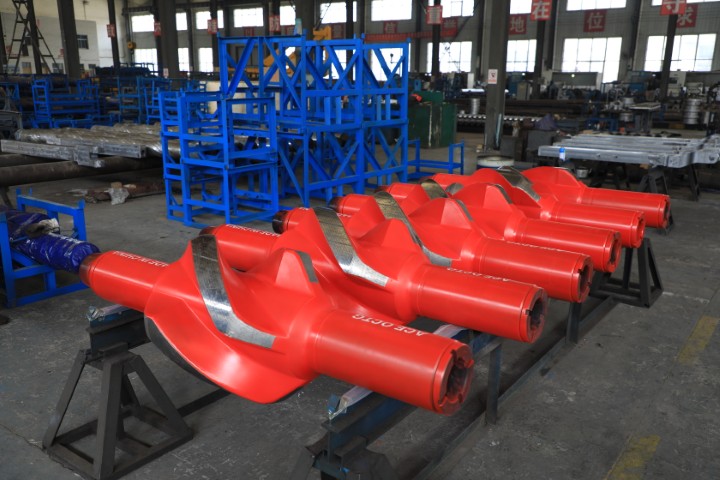In oil drilling, the drilling tool is driven to break the rock, drill underground, drill out of the wellbore at a specified depth, and supply the oil or gas producer to obtain oil or natural gas. A commonly used oil drilling rig is mainly composed of eight parts, including power machine, conveyor, working machine and auxiliary equipment.
Generally, there are eight major systems (hoisting system, rotating system, drilling fluid circulation system, transmission system, control system and monitoring display instrument, power drive system, drilling rig base, drilling rig auxiliary equipment system), which must have the ability to start and lower drilling, rotary drilling, and circulating well washing. Its main equipment includes: derrick, overhead crane, winch, swimming pulley, hook, turntable, faucet (power faucet) and drilling pump (the site is customarily called the drilling rig eight parts), power engine (diesel engine, electric motor, gas turbine), linkage, solid control equipment, well control equipment, etc
Lifting system
In order to lift and lower the drilling tool, lower the casing, control the drilling pressure and feed the drilling tool, the drilling tool is equipped with a lifting system.
The hoisting system includes a winch, auxiliary brake, overhead crane, traveling car, hook, wire rope and various tools such as lifting rings, elevators, tongs, slips, etc.
When lifting, the winch drum winds the wire rope, the crane and the traveling car constitute the auxiliary pulley group, and the hook rises to realize the lifting of the drilling tool through the lifting eye, elevator and other tools. When lowering, the drilling tool or casing string descends by its own weight, and the lowering speed of the hook is controlled by the brake mechanism and auxiliary brake of the winch. During normal drilling, the feeding speed of the drilling tool is controlled by the braking mechanism, and a part of the weight of the drilling tool is applied to the drill bit as a drilling pressure to break the rock formation.
Rotation system
The rotary system is a typical system of the rotary table drilling rig, and its function is to drive the drilling tool to rotate to break the rock formation, and the rotating system includes the rotary table, faucet, and drilling tool.
According to the different wells drilled, the composition of drilling tools is also different, generally including square drill pipe, drill pipe, drill collar and drill bit, in addition to centralizers, shock absorbers and mating joints.
Among them, the drill bit is a tool that directly crushes the rock, and there are scraper bits, cone bits, diamond bits and other types. Drill collars are heavy in weight and wall thickness and are used to apply drilling pressure to the drill bit, and the drill pipe connects the surface equipment to the downhole equipment and transmits torque. The cross-section of the square drill pipe is generally square, the turntable drives the whole drill string and the drill bit to rotate through the square drill pipe, and the faucet is a typical component of the rotary drilling rig, which not only has to bear the weight of the drilling tool, but also to achieve rotary movement, and also provides a channel for high-pressure mud.
circulatory system
In order to carry the broken cuttings of the bottom drill bit to the surface in time for continued drilling, and at the same time, in order to cool the drill bit to protect the well wall and prevent the occurrence of drilling accidents such as well collapse and leakage, the rotary drilling rig is equipped with a circulation system.
The circulating system includes drilling pumps, ground manifolds, mud tanks, mud purification equipment, etc., of which the ground manifold includes high-pressure manifolds, risers, and water hoses, and mud purification equipment includes vibrating screens, desanders, desilters, centrifuges, etc.
Post time: Jan-24-2025





